Dehumidifiers help a great deal in controlling indoor humidity. These units carry numerous benefits for your home, and above all, your health. Before purchasing a dehumidifier, consider the following factors to determine your best fit.
Here are some main factors that you should consider before buying a dehumidifier:
Dehumidifier Types
There are two primary types of dehumidifiers, including desiccant and refrigerant (compressor-based) units. The main difference between the two dehumidifiers is their effectiveness when operating in different temperatures.

Desiccant Dehumidifier

Refrigerant Dehumidifier
Dehumidify based on Size & Space
Your room size is a vital consideration when determining the capacity of your prospective unit. Dehumidifier capacity is measured in pints, indicating the amount of moisture the unit can extract from your indoor environment within 24 hours.
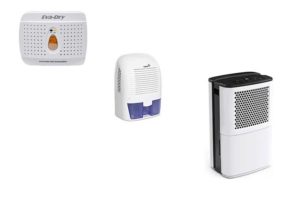
Note: Department of Energy revised its standards for rating Dehumidifiers.
Small Dehumidifier
Mini dehumidifiers can be as small as 250-ml or 24-ounce units. These devices are highly lightweight and portable, a suitable pick for closest, small bedrooms and bathrooms.
Coverage: 200 to 300 sq ft
Suitable Areas: Bathrooms, Dorm Rooms, Small Bedroom
22-Pint Dehumidifier
22 Pint Dehumidifiers were rated as 30 Pint prior to 2019 due to the change in rating standards.
These dehumidifiers are convenient for small spaces like closets and bathrooms. They can remove approximately 30 pints of moisture every 24 hours. They are small-sized units and may require you to empty the water container more often.
Coverage: 1,500 to 2000 sq ft
Suitable Areas: Bedroom, Living Room, Small Basement, RVs
35-Pint Dehumidifier
35 Pint Dehumidifiers were rated as 50 Pint prior to 2019 due to the change in rating standards.
50-pint dehumidifiers work best for bathrooms with showers and medium-sized spaces. They are bigger and heavier than 30-pint dehumidifiers and promise to extract a significantly higher amount of moisture. Since these units are not lightweight, they come with a set of wheels for enhanced mobility.
Coverage: 2,500 to 3,500 sq ft
Suitable Areas: Bedroom, Living Room, Small Basement
50-pint Dehumidifier
50 Pint Dehumidifiers were rated as 70 Pint prior to 2019 due to the change in rating standards.
Dehumidifiers with a 70-pint capacity are perfect for large rooms or basements with a high humidity level. These units are incredibly versatile when it comes to handling a broader set of humidity conditions.
Coverage: 3,500 to 4,500 sq ft
Suitable Areas: Entire Home, Living Room, Large Basement
Commercial Dehumidifier
Commercial grade dehumidifiers are meant for expansive rooms with bigger moisture removal challenges. They draw in more air and hence filter more moisture than residential units. Commercial dehumidifiers are designed with enhanced mobility in mind; for instance, some units boast a stack able design for enhanced convenience during transportation. These dehumidifiers work beautifully in a wide range of temperatures, making them handy devices for water damage restoration.
Coverage: over 5000 sq ft.
Suitable Areas: Construction Sites, Flood Sites
Do You Require Special Features?
Different dehumidifier models come with various unique features that improve their usability significantly. It’s essential to consider the following features before purchasing a dehumidifier:
Auto-Restart Function
The auto-restart feature ensures that your unit will continue operating after a power fault. This feature is convenient for people residing in areas that constantly experience power outages. Some units will resume operation with your previous configurations, making them handy for places you rarely frequent, such as crawl spaces.
User-Friendly Controls
Accessible and understandable controls allow you to set your preferred humidity level to a certain percentage or by category, for instance, ‘very dry’ or ‘dry.’ A unit with user-friendly controls enables you to customize its operations to address a wide range of humidity conditions, ranging from a slight moisture issue to a major challenge like a flood.
Hose Connection
Dehumidifiers with a hose connection automatically discharge the accumulated water into an external drain. This is contrary to units without a hose connection, which directs the condensate into an internal container. By purchasing a unit that supports continuous drainage, you dodge having to empty the water tank manually, which can be both tedious and hectic.
Check to see if the hose is included in the purchase package or needs to be bought separately. Dehumidifiers with a hose connection are especially ideal for highly humid rooms like basements. This feature is also crucial during water damage restoration.
Timer
A timer allows you to set your appliance’s operation to suit your lifestyle and environmental requirements. This feature affords you 100% control over your dehumidifier regarding when the unit starts and stops operating, even when you’re not around.
Washable Air Filter
A washable air filter affords you the convenience of cleaning off any accumulated particulates. This means that you won’t need to purchase new filters now and then.
Integrated Humidistat
Built-in humidistats measure and display your atmosphere’s moisture levels, allowing you to monitor your indoor environment effortlessly. You can consequently adjust your unit’s settings to suit your humidity preferences precisely.
Frost Sensor
If you reside in an area with freezing temperatures, consider buying a unit with a frost sensor. This feature activates the auto-defrost function when it senses ice in the unit’s coils, allowing the device to continue operating normally.
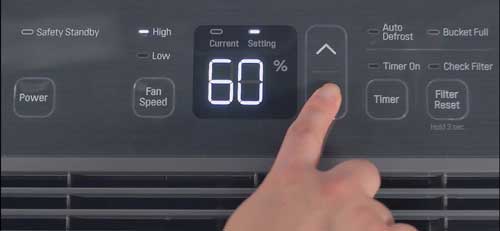
Where Will You Place Your Unit?
Dehumidifiers are efficient additions to any space, including living rooms, bathrooms, kitchens, closets, and crawl spaces. Once you purchase a dehumidifier, you need to determine where to place it without crowding your space or hindering its effectiveness.
Select a dehumidifier of the appropriate capacity. A unit whose capacity is too large for your room will draw too much moisture and overcrowd your space.
Standalone dehumidifiers are most efficient when placed in the center of the room. Consider whether you have enough room for your prospective unit.
Most dehumidifier manufactures recommend placing the unit at least six inches away from the walls and obstacles like curtains that might obstruct airflow. If you have a confined space, consider getting a unit with a smaller footprint.
Consider purchasing multiple compact units if you have a massive home with numerous small rooms
The coverage area of a dehumidifier doesn’t account for walls separating rooms. This means that if your home’s first floor is 2000 sq. ft. and your unit coverage area is 2000 sq. ft., it will not effectively dehumidify all the rooms on that floor. It will only cover the room in which it’s placed.
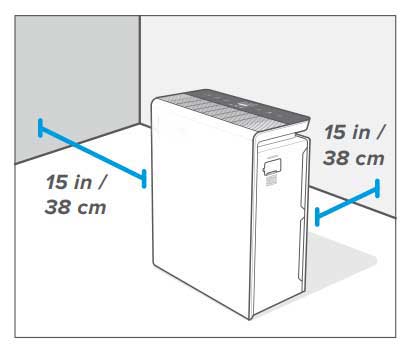
How Energy-Efficient Is Your Unit?
Once you have narrowed down your purchase list to a few dehumidifier models, proceed to check on your unit’s energy efficiency. Your prospective unit should consume as little energy as possible. When making your purchase, compare several units’ power consumption rate and select one that will extract excess humidity from you indoor space without costing you too much in the form of energy bills.
Is the Price Favorable?
Dehumidifiers’ prices vary depending on several factors, such as capacity, special features, durability, and even portability. Also, refrigerant models are typically pocket friendlier than their desiccant counterparts. After comparing your prospective dehumidifiers’ salient features, pick a unit with the most favorable price tag. Remember that it’s worth spending more on a unit that perfectly accomplishes your objectives.
How is Your Indoor Humidity Level?
Indoor moisture levels impact the performance of all dehumidifiers. If your indoor environment is highly saturated, it’s imperative to purchase a bigger unit. Similarly, dehumidifiers hit their capacity quicker in highly humid environments, implying that you’ll need an appliance with an efficient drainage system. If your room is overly damp, consider getting a device that supports continuous drainage or one with a pump. You don’t want to spend the entire day watching your device and making frequent trips to the sink.
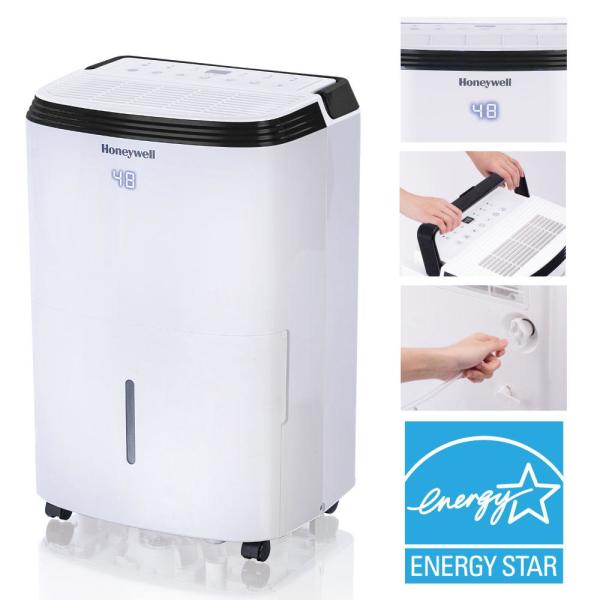
Why Do You Need a Dehumidifier?
There are numerous health benefits associated with dehumidifiers. For instance, allergy and asthma sufferers can use dehumidifiers to control their living space’s humidity levels and make the environment less conducive to airborne allergens, which are the key triggers of their symptoms. If containing allergens is your fundamental reason for buying a dehumidifier, you may want to purchase a unit with a HEPA filter. The filter will enable your appliance to moonlight as an air cleaner, allowing you to breathe easier, relax and sleep better.
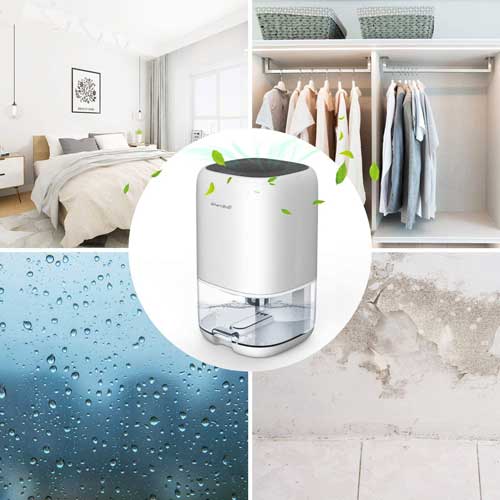
The Bottom Line
Reduced humidity levels in your indoor environment mean no bacteria growth or mold spores and dust mites floating in the air. Such airborne contaminants would otherwise aggravate your symptoms, especially if you have an underlying condition like asthma or allergy. Also, dehumidifiers can enhance the comfort levels for people without medical concerns by making the air more breathable and eliminating the chances of mold growth, which often causes a musty odor.
Besides, reduced humidity levels mean that there’s no condensation on your windows, among other surfaces in your home. This helps with preventing structural damage to your property. Effective moisture removal also helps with preserving your prized possessions, for instance, electronics and books.
The market is flooded with different dehumidifier models to satisfy every situation. You simply need to find a suitable unit that suits your needs. Whether you’re looking to purchase a residential dehumidifier for your home or a commercial appliance for your water restoration business, the above guide will help you decide what unit is best suited to handle your specific situation.
